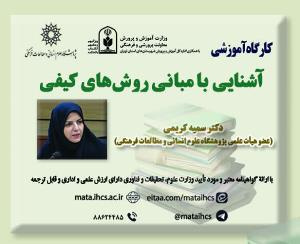آموزشکاوی مشارکت نوجوانان برای یادگیری مهارت خوانداری زبان های خارجی در قاب واقعیت افزوده ربات های اجتماعی (مقاله علمی وزارت علوم)
درجه علمی: نشریه علمی (وزارت علوم)
آرشیو
چکیده
این پژوهش مداخله ای، با طرح موازی به آموزش کاوی حضورِ فعال نوجوانان در جامعه های کوچکِ تمرین برای یادگیری مهارت درک خوانداری زبان های خارجی از طریق آموزش با ربات اجتماعی به وسیله واقعیت افزوده می پردازد. به این منظور، با کاربرد طراحی آزمایش ها، 552 دانش آموز دختر و پسر فارسی و غیر فارسی زبان از رده سنی 11-12 سال به شیوه گزینش طبقه بندی انتخاب شدند. آن ها به شکل تصادفی به دو گروه دسته بندی شدند تا مهارت درک خوانداری انگلیسی، عربی و یا فارسی را به عنوان زبان خارجی فرا گیرند. تمرین جمعی مهارت های خوانداری زبان های خارجی به وسیله واقعیت افزوده پیش ساخته یا خودساخته برای آموزش محتوای خوانداری به ربات اجتماعی، پیش از آموزش و ارزیابی انفرادی برخط در مرحله بررسی کمی سبب شد تا این پژوهش در قالب کلاس های معکوس طبقه بندی شود. رویدادنگاری آموزش دهنده ها در دوره آموزشی، مرحله بررسی کیفی این پژوهش را شکل داد. تحلیل ورایانس (با اندازه های مکرر) روی داده های به دست آمده از ارزشیابی مهارت خوانداری شرکت کنندگان، نشان دهنده کارایی مشارکت در تمرین و یادگیریِ درک مطلب، با استفاده از آموزش به ربات های اجتماعی از طریق واقعیت افزوده خودساخته بود. به شکل مشابه، برداشت یاددهنده ها، حضور فعال فراگیرندگان را عامل مهمی در موفقیت آموزش خواندار زبان های خارجی، از طریق واقعیت افزوده ربات های اجتماعی جامعه های کوچک قلمداد می کرد.Educational Didactics in Teaching Foreign Language Reading Comprehension Skills to Youth Community of Practice through Social Robot's Augmented Reality
New applied games and social robots in today's language education have resulted in robot-games (Robo-Games)-aided language learning. To be precise, social robot's augmented reality combines the real world with technology to add a layer of digital over the physical, allowing students to visualize the materials in the scenes of real world. One of the major perks of Social Robot augmented reality-aided learning modules is being able to practice materials in an environment like the real-world setting through the medium of simulation. Social Robot augmented reality affords students the opportunity to practice reading comprehension in a supportive context, where the quality of collaborative practice has been indicated to be beneficial. This may make more sense to expose students early to reading materials regarding their future life. According to the socio-cultural theory of cognitive development, Community of Practice is now the place where students with the high and low level of foreign language proficiency, in tandem with students from different nations come to apply the cued scenes of the augmented reality and learn by teaching social robots. This way, the focus of the study was to do educational didactics in the Community of Practices of Middle Eastern Youths for doing foreign using social robot's augmented realities in the Community of Practices.







